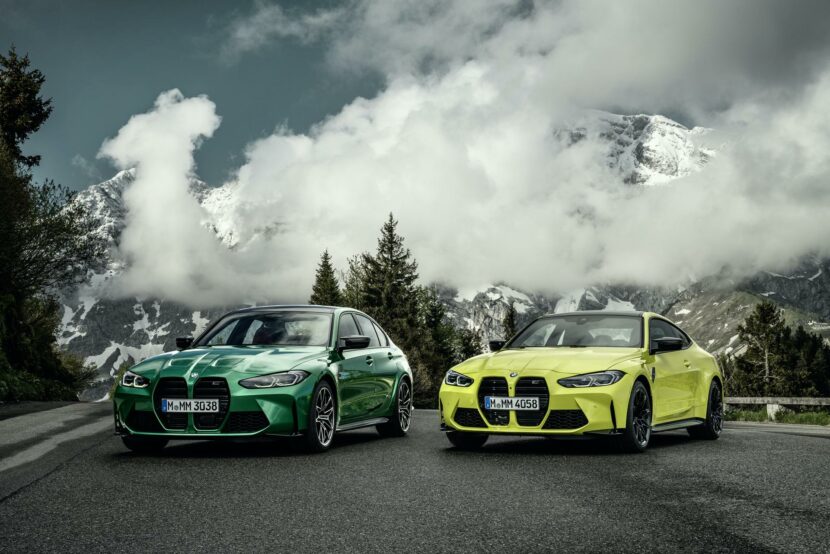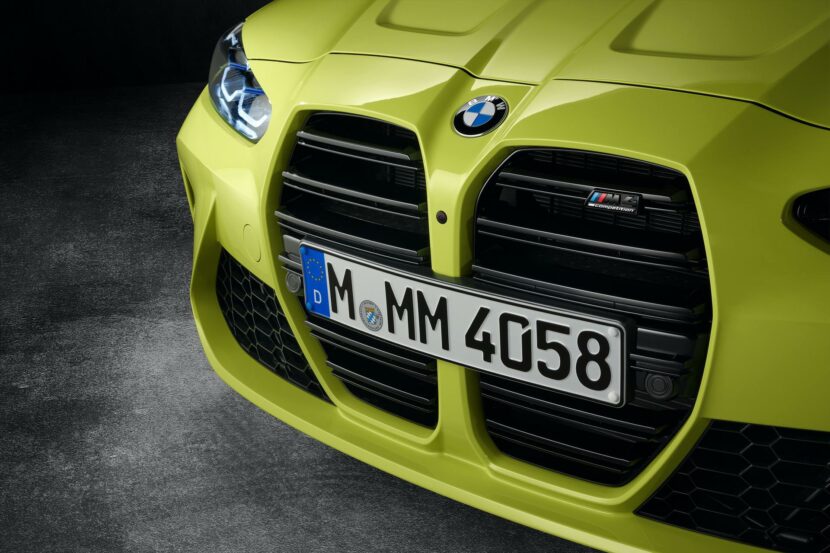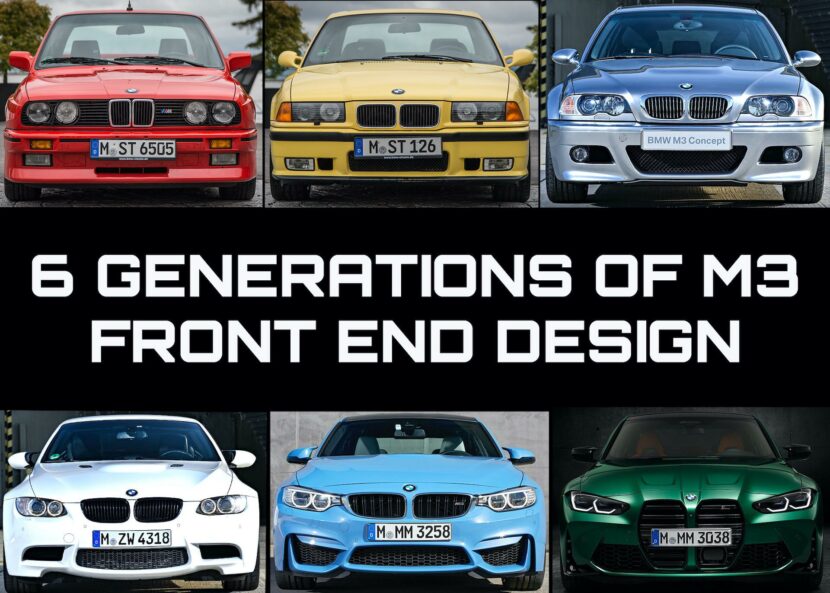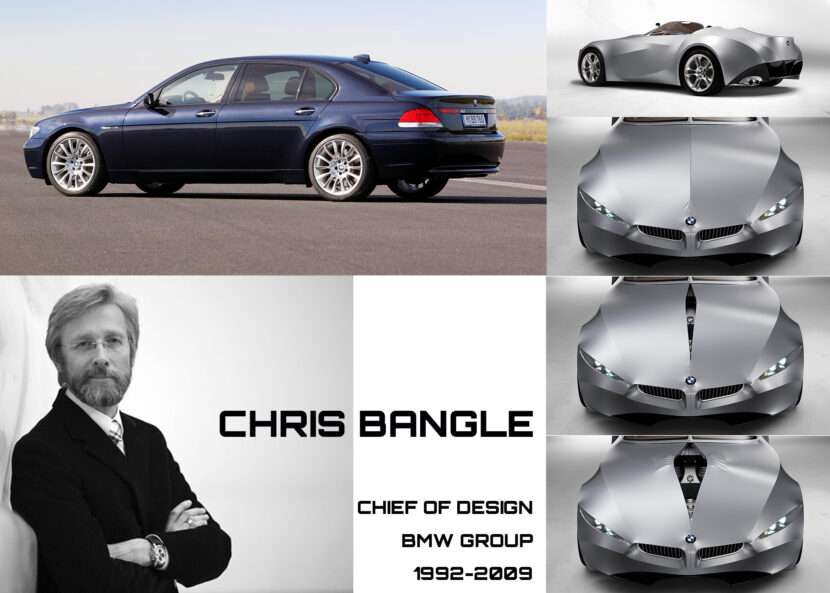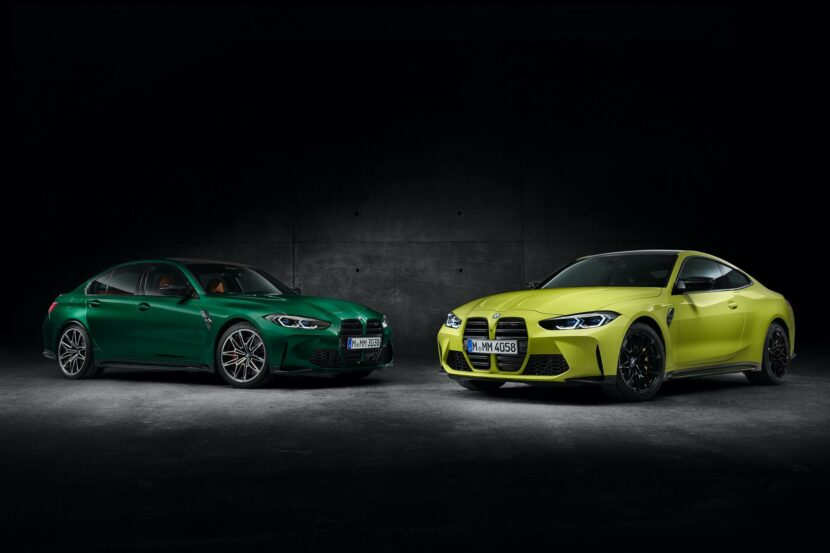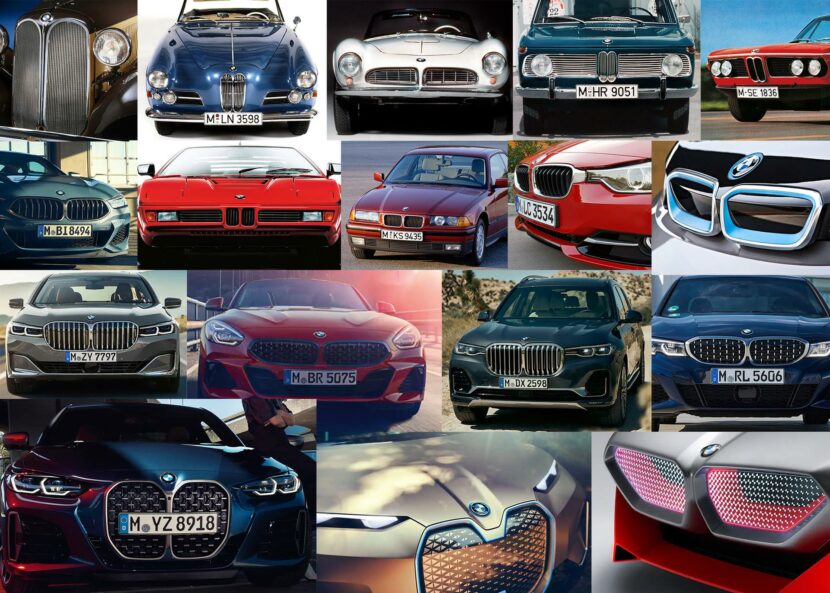Rejoice! The icon that bears the M3 and M4 badge is back – and in its 6th generation it’s stirring feelings and inciting reactions amongst both, the automotive aficionados as well as the flavor of the month club members. The question is, do these feeling make you grin, or do they put a grimace on your face? Join me in this deep dive as we explore design, the passage of time, and how it influences our own personal tastes!
In case you missed it, we are standing at the precipice of the launch and official worldwide reveal of BMW’s darling M3 and M4 models. They are designated as the G80 and G82 generation respectively. Over the past few months BMW in partnership with the M Division has been teasing us with social media posts, as well as YouTube videos, giving us glimpses into what we can expect to see.
The primary focus of these engagements has been centered around the performance aspects and what it takes to engineer these models at the caliber that BMW M aims to deliver. With that said, these social posts and videos, whether by-design or by happenstance, have revealed design elements as well – and that’s what we’re here to talk about today – design, time, and personal tastes!
It’s All About The Grille – It Seems
Fans of the BMW brand, and especially M vehicles, have been split across the board when it comes to one particular section of the new M3 and M4 models – the front kidney grille. We can all agree that the front “nose” design is one of the most recognizable and defining features on a BMW.
It sets the tone, gives the vehicle a certain presence, and influences design lines for the rest of the body. Traditionally, the kidney grille has been described as conveying a feeling of performance, aggressiveness, power and quality. It’s also one of, if not THE most recognizable design elements on a BMW, and something you absolutely cannot confuse with any other automotive brand on the market.
In fact, I’d go so far as to say it’s as recognizable as the McDonald’s golden “M” arch, the Coca-Cola logo, and Nintendo’s Mario. There’s no denying this fact.
The reveal of this new front end shows us all that the grille is a lot taller than previous generations – spanning from the bottom front bumper all the way up to the top where the hood begins, we can see that each “nostril” is actually its own piece and wholly separated from its sibling.
Each piece travels upwards and actually flows even further up into the hood, forming defined channels that have debossed, or recessed sections down each center “vein” which in turn emphasizes the design even more. The internet has been stirring and it’s clear that you either love it, or hate it. But will that always be the case? I’m not so sure.
Changes Are Always Controversial
Do you remember when the E36 M3 replaced the E30? If you do, congrats, you’re a veteran gearhead! But besides that, the shift stirred the design community a bit. It was larger, and that worried some folks. A better example yet, do you remember when the E46 replaced the E36?
Yeah, that was a bigger design leap, and one that split enthusiasts across the board much like the G8X gen is doing today. The more curvaceous lines of the E46, a stark departure from the sharp and angularly penned early 90’s design of the E36 ruffled some feathers back in the day.
How about the E90/E92? Aside from the powerplant going from a straight six to a V8, the design was an evolution of the E46, but sprinkled with a heavy dose of power bulges. Lastly, and what is now considered the “previous gen” M3 (which, as a current owner of an F80 M3 CS, feels weird to say) the F80 was a massive change from both a design and powerplant perspective with its sharp lines and wider stance.
Did everyone like it? No. I personally love it, and can’t find a single fault, but that’s my personal take fueled by my personal taste. And it’s here that I want us to take a break and talk about the Chris Bangle design era.
Remember Chris Bangle?
Chris Bangle, if you didn’t know, is an American automobile designer who in 1992 took the reigns as the Chief of Design at BMW. As Chief of Design his hand touched everything from the Z line to the 1, 3, 5, 6, and even 7 Series, plus the X3, X5, and X6.
He also famously designed the BMW GINA concept car. So needless to say, he had a massive impact on the design language of most BMW’s of that era. What you may not be privy to (or maybe you are, depending on how much of a BMW-phile you are) is that when the Bangle era BMW’s first launched, and many moons thereafter, there were quite a few enthusiast of the brand that were not happy with the rear end of the vehicles – the best example is the E65 7 Series.
In fact, to this day, there are strong opinions that argue for, and against this era in BMW’s design catalog. Some praised the design revolution, applauding the fact that the brand is boldly stepping into new territory, unafraid to trailblaze a new design theme. Others lamented the fact that it’s too different and not part of BMW’s design DNA.
This is the same era that laid the foundation for a larger 7 Series mind you. This was also the same era that gave us the E60 5 Series. So given all that, ask yourself “has this design approach made a lasting impact and moved the brand’s design language into a more modern era, or no?”
Does playing it safe and doing the same thing with slight tweaks a good thing, or does bold and striking advances in design ultimately lead to a more exciting and diverse design catalog?
Back to the topic at hand – the new G8X M3 and M4 – as proper M cars in the BMW M stable, you know the design choices made on these latest cars will influence the rest of the line-up. I’ve interacted with people on both sides of the “kidney-gate” topic.
Some enthusiasts don’t care what it looks like and their primary focus is the performance gains that will net them a better driving experience, both on track and off. These people usually have neutral to excited reactions to the new M cars. Others are quick to turn their heads in protest, holding on to their F8X and older gen M cars stating that the “era of the dignified grille” has passed.
These people usually have less-than-favorable things to say about the new front-end designs.
We’ve talked about design, now let me add another layer to this discussion – specifically, a time layer, and more importantly how we are all influenced by the passing of it.
BMW was founded over 100 years ago, meaning that it predates you, the reader. This automatically means BMW existed before you entered the car scene, and that means that what you consider and label as a “classic design” is actually your own personal perception of reality formed at the point when you were old enough to know what you liked, plus 15-20 years after.
This in turn led to your formation and subsequent categorization of specific views as to what is a “classic” look, according to your personal metrics, which are all tied to time – as in the point in time that you entered the BMW car scene. That’s a complex way of saying this – speak to someone that’s in their 80’s and ask them what a classic BMW front end looks like to them.
The Customer Base Is Changing
Now ask a 25-year-old the same question and see what they answer. I bet you Breitlings to biscuits that the silver-haired 80-year-old will likely talk to you about the 507 Roadster, while the 25-year-old enthusiast will likely call out the E30 M3. Side note, if you had to look up what the 507 Roadster is, you’re proving my point.
Basically, the 15-year-old BMW enthusiast of today, that’s reading this very article, right now (let’s name them Sam) is more than likely going to look at the 2020 M3 and go “this right here is what speaks to me.” It’s the latest and greatest from BMW M, and this is fact.
What this also means is that 20 years from today, if someone were to ask Sam what their thoughts were on the 2040 M3 and how it stacks up with previous models, Sam would likely say “you know what, the kidney grille design on the 2040 M3 is sooo different than what I consider to be classic BMW design” and in this scenario the “classic BMW design” that Sam is referring to is the focus point of this entire article – the new 2020 BMW M3/M4 kidney grille. It all has to do with time.
To provide a more personal example of my time/design theory, and because I mentioned Breitling earlier – when I was 16 years old I had discovered my love for watches. It was around that time that I really got into cars, speed, and mechanical works of marvel, so it was only a matter of time (pun not intended but I’ll roll with it) that watches would inevitably take hold of my curiosity and never let go.
I was old enough to understand and appreciate exquisite timepieces, the mechanical precision and ingenuity that goes into each movement, and the care and love that I felt was devoted into building tiny wrist instruments to keep track of the passage of time.
I started researching Swiss watch manufacturers and distinctly remember seeing the Breitling Navitimer for the first time in one of those fancy watch aficionado magazines. It was stunning. The Breitling wings logo stood out like a majestic shield, acting like a seal of quality steeped in rich aviation history.
That was imprinted onto my soul. That was Breitling to me. The Navitimer with those beautiful wings.
Fast-forward to today and if you look at the latest generation Breitling Navitimer, you’ll notice that the wings logo has been replaced with a tamer “B” logo. I’ll be honest, I’ve been struggling to accept this new design, but after doing some research in trying to understand why this change was made, I discovered some curious facts.
It turns out that the “B” logo predates the Breitling wings logo, and that in an effort to unify the land/sea/air ethos of the company, the new CEO decided that the new watches will sport the B instead of the wings. Again, I was 16 when I first laid eyes on the Navitimer, which at the time was sporting wings.
That was when I entered the “watch scene” and that’s what I understood as being a “classic” Breitling design, even though unbeknownst to me, the B logo was actually the truer classic design. It’s like bookmarking a moment in history when you first arrive – you believe that’s what a design should be, but later you find out that there’s more that predates your bookmark – more design, more interpretations, more history and experimentation. Just ask that 80-year-old.
My point is, BMW design changes, decade over decade. It has to, because if it wouldn’t, everyone would complain that the design department has no imagination and that they’ve run out of ideas. And because of the fact that things change, the time in which you entered the BMW car scene and you were old enough to know what you liked from that generation, which for you was the latest and greatest (like my Breitling scenario) that design gets imprinted into your automotive soul.
Here’s a reminder of some of the BMW kidney grilles that the company has had throughout its over 100 years as an automotive icon.
Clearly, BMW kidney grille designs have varied drastically over the years, but time coupled with changing tastes means there will always be fans as well as critics on both sides of the famed nostrils. We’ve had horizontally elongated grilles on the 507. Succinct and understated grilles on the M1.
Hexed, slatted, meshed, and even solid surfaces spanning many models and generations, all having adorned the front end of our favorite Bavarian brand over the decades.
And it’s clear to see, BMW has not shied away from bold design choices. Being a trailblazer, either in design or life, means opening yourself up to critique, to harsh reactions, and even failure. But the risk is worth it, because without trailblazers, without experimental design, without fearless creativity we’d all be driving a boring box on wheels. The same box, with the same design, year over year.
Styling And Personal Taste Is Subjective
But because we’re not all the same, and because we all have our own likes and dislikes, I submit to you my 3rd and final point – personal taste.
As most of you reading, I was raised to not judge people’s personal tastes. As a child, I didn’t understand why it was “bad” to tell Sam that “eating pizza with pineapple is weird, and that makes you weird” but time answered this question for me as well, in the form of maturity.
Once you hit a certain age, and you start to make some observations, you begin to realize that having the same shoes, same clothes, same everything as your friends is boring. You begin your journey in figuring out what your own style is. You start exploring your likes, from food to fashion, colors to careers – you formulate your own personal tastes. In short, you’re becoming your true self.
And so, time taught me why it is that we don’t judge personal taste. People like what they like – sometimes they can explain the reasons behind why they like one thing over another, and sometimes they can’t. And stranger still, sometimes, people change their minds.
It’s this last bit that I want to focus on – I used to hate pineapple on pizza, now I think it’s pretty good. Sam, if you’re reading this, I’m sorry. You were right. Pineapple on pizza is pretty good.
In all seriousness though, pineapple and pizza analogy aside, people’s likes and dislikes change over time. Food, fashion, politics, design, movies, you name it, opinions and likes change all the time. This applies to automotive design as well, and it brings me back to my earlier Chris Bangle design section. People that panned his “bangle butt” design now look back and go “you know what, that actually aged very well.”
Concurrently, people that liked his take on the 7 Series back in 2001 now think it was exaggerated and brash. The point is, “timeless design” rings true for the people that like the design in question when they are making that statement. Meaning personal tastes differ from person to person, they can’t be judged, and even so it doesn’t matter because today a new kidney grille from BMW may be deemed brash and exaggerated, but in 10 years when the new kidney grille shows up, this 2020 design will be beloved by possibly the same people that bashed it 10 years earlier.
And you know what, that’s totally fine. Why? Because you don’t judge personal tastes. We’re all different, and we like different things. One absolute fact to keep in mind though – if someone doesn’t make something different to begin with, how will you know if you’d like it or not without first seeing it?
Trailblazers are good. Which brings me to my final words.
A Bold Step In The Right Direction
We now have a new kidney grille entry affixed onto an iconic model, the M3 and M4 respectively – my prediction, and using history as a teacher – I believe that this new kidney grille design will usher in a new generation of fans, and in time will prove to be a bold step in the company’s design language.
It will have an impact on the auto industry, and it will undoubtedly stir emotions, both positive and negative – but at the end of the day we’re all allowed to love one design over another because we all have our own personal tastes. If BMW didn’t try, we’d be bored and say they were resting on their laurels.
But trailblazing isn’t easy, and I believe that given enough time, history will prove this new design rings true.
In any case, I want to hear from you! What are your thoughts? Do you like the new kidney grille design? Do you love it? Do you want to wake up and realize this was all just a bad dream? Are you a fan and would you buy one? Would you consider buying one for the performance gains in spite of the design? Share your thoughts below or via our social channels! Subscribe for more content like this, and as always, stay safe and be awesome!
- instagram.com/bmwblog: BMWBLOG’s IG where we post fresh pics daily
- youtube.com/c/bmwblog: BMWBLOG’s YouTube Channel
- com/m_chi3f: My personal IG where you can track my automotive escapades
- com/user/CM3Project: My Personal YouTube Channel



